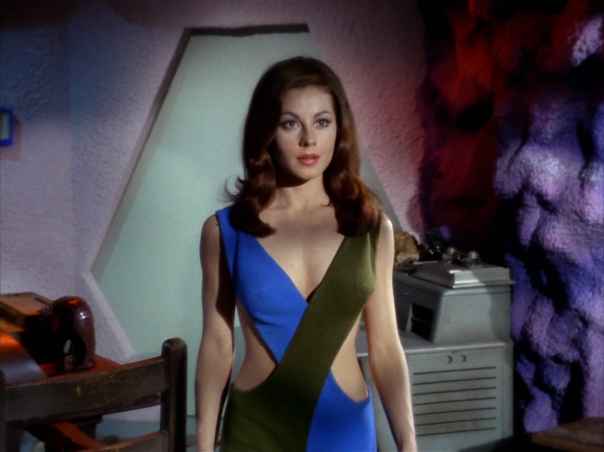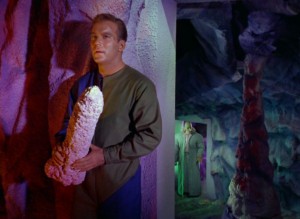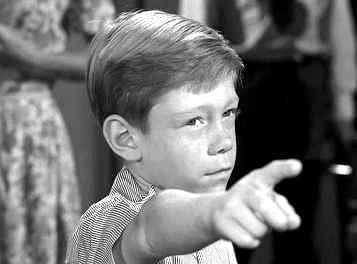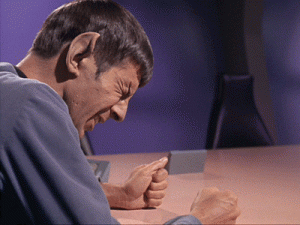Category Archives: Star Trek
What Star Trek’s Balance of Terror Can Teach Us About the Ukraine Crisis
Trek Through Trek – Part IX
 Extremites, when I sat down today to watch the news I was bombarded with coverage of the Ukraine crisis. I have been following this event with great interest; being a political nut, historical fanatic, and Russophile, this conflict plays on my chords.
Extremites, when I sat down today to watch the news I was bombarded with coverage of the Ukraine crisis. I have been following this event with great interest; being a political nut, historical fanatic, and Russophile, this conflict plays on my chords.
The news coverage of the Crimea conflict shows just how off base Western Culture is when talking about Russian people. If you are a Western Child, you grew up with a stereotype of Russians as bad guys who live there lives in the soul purpose of destroying everything the West holds dear. This stereotype has led to an oversimplification of Russian relations; making it a black and white scenario.
Nothing is black and white.
No piece of literature, no piece of cinema, no television show, has illustrated that more than Star Trek.
Today’s Trek TroughTrek focuses on one of the best Star Trek episodes of all time: Balance of Terror. This episode is a prescient and important piece that is more import now than it has ever been.
If you read this blog on the regular you are aware that I love to talk about the Cold War. It is near impossible to discuss Silver Age comics without a rudimentary understanding of what made up that period in history. What is astounding to me about this time is how close the Earth was to thermo-nuclear holocaust. This is not hyperbole. The leaders of both sides entertained nuclear weapons as a viable military option; an idea that seems less prominent today.
Diplomats in the period had a death scenario that hang in the back of their minds like a cobweb. Called the ‘single soldier scenario’, it went something like this: in a period of heightened tensions, one soldier lets loose a bullet which kills an enemy soldier. This then butterflies into a larger scenario that forces both governments to retaliate with armies and major war actions. The actions would snowball to the release of nuclear weapons, ending in complete destruction.
Lots of works of the early Sixties were obsessed with this possibility. Kubrick’s masterpiece Dr. Strangelove, or How I Learned To Stop Worrying and Love the Bomb took that scenario to a frightening end. Multiple books and plays capitalized on this fear as well. Balance of Terror takes influence from this scenario and extrapolates it into an intense military nightmare.
Balance of Terror was not coined as an allegory for the Cold War. It was an adaptation, by Paul Schneider — in space, mind you— of the 1957 film The Enemy Below, which concerns a destroyer battling a German U-Boat in World War II. Paul Schnieder says that it was his intention to make this episode of Star Trek feel like a sailing epic: “like two Master and Commanders duking it out in full blindness.”
Balance of Terror is a very simple premise compared to some of the other episodes. A Romulan Commander leads his Bird of Prey across the borders of the Neutral Zone, a boundary between Federation Space and the Romulan Star Empire, to destroy a series of star bases. Why he does this is never discussed. The Enterprise is tasked with maintaining peace along the border by any means necessary. Because the Romulans have no warp capabilities they have created something called ‘a cloaking device,’ which hides the ship from any screens. Kirk must use his ingenuity to catch the ship without being able to see it. Over the episode Kirk and the Romulan Captain — played by Mark Lenard, who later went on to play Spock’s father Sarek — gain a mutual respect for one another as they tilt lances in a mortal struggle.
Imagine the Federation was the Ukraine and the ‘Neutral Zone’ was Crimea. Putin, being the Romulan Commander, has crossed the border under the pretence of protection and the Enterprise, being the West, must protect the boundary between the two sides. What is different about our situation than the one posed in the show? One major aspect. Respect.
Respect!
I can hear you saying that Putin does not have respect for the West. I’d submit the exact opposite: the West does not have respect for Russia.
 I think Putin has great respect for the West. This is why he works his life, and many other Russian politicians as well, to always get the upper hand. This is why he and his administration are so terrified of the Ukraine, and Georgia before it, forging closer ties with the West. When Russia makes a complaint, whether it be a noninterventionist plea or a political ask, the West shrugs it off as a byproduct of a ‘little people trying to restore the former glories of a superpower past.’We don’t look at these actions and wonder why Russia is calling for them. We have never been able to look at diplomacy from Russia’s point of view and understand why they act the way they do.
I think Putin has great respect for the West. This is why he works his life, and many other Russian politicians as well, to always get the upper hand. This is why he and his administration are so terrified of the Ukraine, and Georgia before it, forging closer ties with the West. When Russia makes a complaint, whether it be a noninterventionist plea or a political ask, the West shrugs it off as a byproduct of a ‘little people trying to restore the former glories of a superpower past.’We don’t look at these actions and wonder why Russia is calling for them. We have never been able to look at diplomacy from Russia’s point of view and understand why they act the way they do.
This is what Balance of Terror suggests we should do in a period of heightened tension. Kirk spends the episode trying to think like his opponent. He assumes the Romulans are acting under orders and all they want to do is return home unscathed. Knowing that the Romulan Commander would go to drastic lengths to escape, Kirk never once believes the surface clues. Kirk is holding onto his weapons, wondering why the aggressor aggresses, and uses these conclusions to determine his next action. Imagine if the West did that with Russia instead of chanting “destroy an ‘evil aggressor.’”
War is never the answer.
War is never going to end without mass death and devastation.
Our military and political leaders need to think more and posture less.
Thinking is not weakness, it is strength. Star Trek teaches us this.
What a heck of a show Star Trek is.
Until next time, Extremites,
The Episode We Are Watching: Balance of Terror (Episode 8 of Season 1 of The Original Series: December 15, 1966)
My Rating Out of 5 Tribbles: 5 Tribbles Crossing the Neutral Zone, incognito.
My After Episode Thoughts: “What a powerful episode… How do they rectify the Mark Lenard thing?”
Pros: The concept is simple, yet, powerful. All performances are top notch esp. Mark Lenard. It all feels very believable. The score is some of the best music in the The Original Series.
Cons: I don’t have any.
—> Part X
Related articles
The Twilight of Charlie X
Trek Through Trek — Part VIII
Have you watched The Twilight Zone?
Apparently everyone who became a nerd, of any sort, did when they were kids.
I never did. I cannot remember why; as the old syndicated show and the modern redux both figured heavily on the tubes of my childhood television. I cannot remember if it was ignorance — kids are stupid and this one was doubly so— or parental guidance that was the reason behind my not watching of the show. I doubt it was the latter as my parents let me watch some pretty foul stuff as a child. I saw Schindler’s List at a young age and was guided into the brilliance of the film by them. It must have been the former: I was just a stupid kid.
When I grew into a smarter person, I watched the show and fell in love with it. This is a good thing because this episode, Charlie X, seems to be heavily influenced by that show.
Jerome Bixby’s It’s a Good Life is considered one of the seminal episodes of The Twilight Zone. It’s a about a young boy, named Anthony, who possesses omnipotent powers with which he holds the small town of Peaksville, Ohio hostage. He can read every thought of the people that surround him meaning he immediately reacts to any negative idea that they hold. Anthony punishes these unfortunate thinkers by changing the offender into something else. At one point he punishes a person for thinking a terrible thought by changing him into a lizard. Because of this this child’s ‘thought policing,’ every Peaksvillite must go through life in a constant stupor believing everything is “good.” For example, when Anthony’s mother says ‘it is too hot because it is summer,’ Anthony responds by making it snow. His father tells Anthony that the crops will die from the early snow:
“...But it’s good you’re making it snow. A real good thing. And tomorrow… tomorrow’s gonna be a… real good day.”
Needless to say, this episode is extraordinarily unsettling; like all the best Zone stories were. It’s a Good Life left ripples that echoed across 50 years of Sci-Fi. Perhaps, you may better the story from The Simpsons episode Treehouse of Horror II. In Bart’s nightmare, the second portion of the episode, he takes on the role of Anthony and holds Springfield hostage in a similar way. The early Treehouse of Horrors would borrow heavily in a fantastic fashion from The Twilight Zone.
William Shatner, our beloved Captain Kirk, got his television start on the Zone in one of the most iconic episodes Nightmare at 20,000 Feet, again parodied by Bart in Terror at 5 1/2 Feet, as the man who famously sees a gremlin on the wing a plane. In this episode he uttered probably one his most famous lines in television history: “There is _ something_ out there!” It is his performance that put him on the radar of Gene Roddenberry, who then gave the fairly untested Canadian Shakespearian his most iconic Star Trek role. Strange how these things all tie in.
Charlie X, like some of the other early Trek episodes, is once again a rather cooky premise realized brilliantly by actors. The Original Series was peppered with actors who were not afraid to really go for it. Guest actor Richard Walker plays young omnipotent being Charlie Evans. Richard is in top form here. Grace Lee Whitney, in her wonderful memoir of the period, says Lawrence Dobkin, who is the director of this episode, told the entire cast on the first day of shooting that Richard is not to be spoken too. This odd off camera direction came from the fact that the young actor was method. He wanted to remain separate from the crew of the ship to create cold distance between him and them. Surely enough it seems to be present every time Charlie Evans is on screen. Distantial alienation is perfect for this plot, for without the wonderful acting, would come off as a cheap copy of It’s a Good Life.
Compare the plots: Charlie X is about a young boy who has been given omnipotence by a supposedly extinct race, called the Thasians, and he uses that power to exact his wants and a needs on the people who surround him. It is, subtract the mythological alien race, It’s a Good Life. The similarities are much too close to ignore.
The marvellous aspect thing about this episode is that it conveys a new side of Kirk. So far Kirk has been emphasized as a swashbuckling commander; a captain who is more Flash-bang then thoughtful. However, when the lost Charlie Evans is looking for a father figure to guide him through his new experiences with human interaction, he latches on to Kirk, naturally, being the best example of Star Trek masculinity on board. Charlie has never met a woman before and Kirk tries to help him understand the complexities of sex relations. There is a wonderful scene that takes place in the ship gymnasium that offers a glimpse into Kirk’s nurturing side and also shows how insanely fit William Shatner was in the 60s.
Kirk’s guidance ultimately fails to help Charlie assimilate and this is where the core conflict of the episode resides. Since Charlie is unable to achieve his desires, he goes on a rampage using his powers, taking control of the ship and zapping crew members off into the netherworld.
Speaking of crew members there is a rather hokey and, likewise, iconic scene that focuses on the camaraderie of the crew. Uhura sings an impromptu song about the Enterprise with Spock accompanying her on a harp. I believe it was this scene that inspired J.J. Abrams to create the romance between the two crew-members members in his New Star Trek; proving, that J.J.’s research consisted of a couple youtube clips. This relationship in the new films seems wrong because it has never been present before and serves to cheapen the characters. It feels imposed upon the films.
Though this episode is really entertaining to watch; once again, where it falls apart is the drawn out ending. The Thasians, witnessing the swath of destruction Charlie has left, catch the ship and forcibly take Charlie back into their command. It’s a haunting ending mainly because of how Richard Walker plays it. His sorrow at being cut off from humanity is palpable beyond belief, but it is also an extraordinary drawn out scene full of exposition and what I like to call Star Trek extrapolation: that’s where all characters on the bridge, mainly Spock and Dr. McCoy — who has once again found a reason to be on the bridge when he should be at his station — digest what is going in front of them. The scene served to deflate a very powerful performance and the easy fix of the ‘Thasian reset’ did not leave me with that all-important pit in my stomach that the aforementioned Zone episode achieved.
The Twilight Zone is one of the most important television shows in the history of television and Science Fiction. If you haven’t watched it yet I sincerely suggest you get on that. It will give you an expanded understanding of shows like Star Trek and The Simpsons. Plus, it’s just a good watch.
Until next time, Extremites, I remain: Julian Munds
The Episode We Are Watching: Charlie X (Episode 2 of Season 1 of The Original Series: September 15, 1966)
My Rating Our of 5 Tribbles: 3 1/2 Tribbles who just want to be liked.
My After Episode Thoughts: “Way to rip off Twilight Zone, Star Trek.”
Pros: Wonderful Performance from Richard Walker and William Shatner. The effects are great and you really feel the power of Charlie Evans.
Cons: The story is the same as Jerome Bixby’s It’s a Good Life and doesn’t quite reach the haunting heights of the Bixby because of a drawn out and unfocused ending. Yeoman Rand is once again the damsel in distress.
—> Part IX
Related articles
An Important Message From Extremis
Those of you who normally follow this blog have probably noticed a decrease in posts within the last week.
There is a very good reason for this.
I thought that some of the articles we have been posting have become a tad lesser then our standards.
Rather then publish articles that are low quality just to maintain our pledge to you of posting daily I have decided, as Editor, that Extremis will only put out articles when they meet our standards.
A lower frequency in posts will mean a higher quality in articles.
So I hope you continue to follow us and engage with us as we go through this transition.
My Best and Excelsior!
Julian Munds, Editor of The Extremis Review
Related articles
- What Ant-Man Can Teach Us About Management (extremisreviews.com)
- Petition to Name New Planet “Gallifrey” (extremisreviews.com)
- Time To Get Naked With Star Trek: the Dark Side of Exploration (sourcererblog.wordpress.com)
- Movie Review – Iron Man 3 (fernbyfilms.com)
From Noble Savage to Righteous Warrior in Star Trek Voyager
Take a look at this article. Absolutely illuminating.
Related articles
- Defining a Diverse Culture with Stereotypes: The Portrayal of the “Noble Savage” in Star Trek: The Original Series (TOS) (paulwhite2013.wordpress.com)
- 12 DIY Pins of Pinterest- DIY Star Trek Date Night (sewcraftlive.wordpress.com)
- Star Trek Enterprise was terrible and any trekkie should agknowledge this. (pimation.wordpress.com)
- To Boldly Go: Why Star Trek Is Beneficial to Mankind (tjward16.wordpress.com)
Welcome once again to the Star Trek Universe. This week we look at indigenous imagery in Star Trek Voyager. Many of you trekkies are aware that Star Trek Voyager was the first series with an indigenous actor and character in a major role. Robert Beltran played Commander Chakotay – a native American who grew up in the demilitarized zone near the Cardassian border. Commander Chakotay resigned from Starfleet before Voyager to defend his colony/tribe against the Cardassians after they attempted to re-locate them. However he re-joined Starfleet when Captain Kathryn Janeway asked him and his fellow Maquis (classified as terrorists by the Federation) to join the crew as when they were stranded in the Delta quadrant.
This week we analyze the Star Trek Voyager episode “Tattoo”. Tattoo is the ninth episode of second season of Star Trek Voyager. The stardate of this episode is unknown according to the Star…
View original post 2,213 more words
Discussing Star Trek’s Man Trap Monster-Flick
Part VI – Trek Through Trek
The Episode We Are Watching: The Man Trap (Episode 1 of Season 1 of the Original Series: Sept. 8, 1966)
My Rating out of 5 Tribbles: 3 Tribbles who really need salt.
My After Episode Thoughts: “Wow. That really sucked. You see what I did there. Oh. I’m alone.”
Pros: The Enterprise Community, Deforest Kelly and the creature.
Cons: The ending. Kirk’s and especially Spock’s indifference to the whole affair.
 NBC used The Man Trap as the premiere to the Original Series of Star Trek because the plot of the episode both gave a decent introduction to the characters and represented, in their minds, “traditional Science Fiction.” Apparently, they believed “traditional Science Fiction” is a group of humans trying to escape from a hostile alien because, at the core, that is all this episode is. The episode is nothing but a traditional monster flick. Albeit one, with some wonderful character development.
NBC used The Man Trap as the premiere to the Original Series of Star Trek because the plot of the episode both gave a decent introduction to the characters and represented, in their minds, “traditional Science Fiction.” Apparently, they believed “traditional Science Fiction” is a group of humans trying to escape from a hostile alien because, at the core, that is all this episode is. The episode is nothing but a traditional monster flick. Albeit one, with some wonderful character development.
I have gushed, in a prior article, about my man-love for Leonard McCoy. The Man Trap is Bones centered which mean won me over in the cold open. I wonder why NBC decided that a McCoy episode should reintroduce Star Trek to the world?
Bones represents a 20th century familiarity that the other characters of the crew lack. His passion for life in all its forms is what makes Leonard integral to the make up of the first crew.
In this episode we get a glimpse of a past romantic entanglement that the good Doctor had been involved with. Nancy Crater, former fling of Leonard McCoy, married Alfred Crater, a mild mannered space Alienologist, who shortly after tying the knot, asked her to accompany him to a planet in the middle of nowhere. The planet has no designation beyond M-113. Kirk and McCoy are tasked to the planet on a routine inspection just to check up on the well being of the settlers. Apparently, the Federation does this to all settlers in the Universe and thinks it prudent to send a captain of the Flagship to complete this routine job.
When the Away Team arrive on M-113, they find Nancy, but something is clearly up. Nancy appears as a different person depending upon who is looking at her. I must say when I saw this conceit, I loved it; it really piqued my interest. However, as the show progressed, I began to notice the conceit was slipping when she was with McCoy. In this first meeting she is in youthful visage, while Kirk sees an aged woman, however as the show progresses the aged version is the only woman McCoy sees. McCoy never makes a comment on this. This seems like an odd oversight. Could this be because McCoy only sees the inner woman?
What is the nature of that inner woman? Is she an unknown monster?
Whatever it is, it needs salt to live. The monster uses its hidden suckers to pull all the sodium chloride it can out of the bewildered crew members. This is an
ingenious idea: an alien chameleon that takes on the facade of a person that the victim most desires and utilizes this lie to lure the victim to a salt feast. The best example of this lure in use occurs when Uhura encounters a tall man who speaks her language (Swahili, for the uninitiated) to woo her into salty submission. This doesn’t work but it is a great moment none the less and it also happens to be the first moment of development for a woman who, thus far, has been glued to the radio.
It is wonderfully compelling to watch the creature fight for its life by using the guise of Bones to plead his case for survival. I found myself chastising the Captain for his callouss murder of a sentient creature that is the last of its kind.
I wonder the morality of this killing in the scale of Star Trek lore.
We are still extraordinarily early in the establishment of Trekdom, heck, the word Federation still has yet to be uttered, but the idea that humans would unmercifully kill a creature that is just fighting for its life seems to violate some unwritten Star Trek law.
Yes, the creature has sucked to death a large amount of the crew, but it did this only to live.
Perhaps, a comment is being made on its insatiable hunger and how it is this very hunger that destroyed its planet.
Still, I do feel bad for the creature.
As I said before, NBC thought this was a simple episode because of its monster chasing plot.
It is.
There really isn’t much to delve into literary wise.
Aside, from the difference in the background crew.
As the series progressed the action that took place in the many enigmatic Enterprise corridors, heavily featured in this episode, dissipated into empty busy work. I love the sense of community that permeates the Enterprise here. There is so much action and joshing around of crew members. I wonder why this dissipated. Perhaps, it is because of the poisonous controlling atmosphere that NBC began to impose on the show in later seasons.
The Man Trap is simple monster flick. Nothing hugely outstanding, but nothing repugnant either. I did get a tad bored in the middle which makes me wonder why such a vanilla episode was chosen as the second pilot of the show.
<— Part V
—> Part VII
Related articles
- Star Trek on the Small Screen: The Original Series (outrightgeekery.wordpress.com)
- Ten For Ward: 10 Star Trek Episodes As Movies (musingsofamildmanneredman.com)
- Doctor Who (en.memory-alpha.org)
- ‘Star Trek’ fraudster posed as Health Canada official (thestar.com)
- James Kirk, Carol Marcus, and Nyota Uhura (thoughtsontheedgeofforever.wordpress.com)
- Defining a Diverse Culture with Stereotypes: The Portrayal of the “Noble Savage” in Star Trek: The Original Series (TOS) (paulwhite2013.wordpress.com)
Getting to Know the Beast Within Kirk
Part V – Trek Through Trek
What we’re watching: “The Enemy Within” Episode 4, Season 1 of TOS (October 6, 1966)
My Rating Out of 5 Tribbles: 3 Tribbles that think they are “THE CAPTAIN OF THE SHIP!”
My After Episode Thoughts: “A brilliant performance that places Shatner in the pantheon of the acting gods.”
Pros: Shatner’s performance, Epic moment in McCoy history, did I mention Shatner’s performance?
Cons: Spock’s supposed logic, Sulu’s B-Plot, the chauvinism, the damned dog in an alien suit!
If there was any doubt that William Shatner is one of the most important and special actors in television history, this episode should put all of them to rest. From the opening moment when we see Beast Kirk materialize on the transporter deck, his presence is astounding. The way he uses his eyes and physicality to embody his alter-ego’s predatory nature is no easy feet for any actor. Kirk’s two sides are clearly set up as opposites and there is not a lazy moment in which we can see this conceit. His two characterizations are grabbed by the throat and he forces the watcher to believe that his personality has literally split in two.
William Shatner raving aside, this episode is sadly ‘run of the mill’ and backward. The sexism of the last episode is still frighteningly present. At one point Beast Kirk, how I’ll refer to Kirk’s alter ego, attempts to rape the unsuspecting Yeoman Rand in a scene that is unsettling and ahead of its time in brutality. The result is a moment that is very unusual for the largely melodramatic television of the 60s. Grace Lee Whitney, who played Yeoman Rand, says in her memoir that to achieve the right kind of brutality for the scene Shatner slapped her to catch her off guard. Bill is truly a man that goes into these things full throttle and I wonder if that kind of conduct would be tolerated in this day.
After this frightening moment the crew allows the Captain to interrogate Rand after she accuses him of attempted rape. The prospect of a suspected rapist interviewing the victim is an unpalatable idea and dates the episode horribly. The final dialogue of the episode, uttered by Spock, further serves to paint the show with a chauvinistic brush. Spock suggests to Rand that Beast Kirk had some desirable qualities for a mate. This strikes me as an extremely insensitive and barbaric comment. Trekkers might attribute this up to Spock’s coldly logical nature. I, however, believe it is the result of dated chauvinistic writing, and it really put me off my overall experience.
Further more, I question Spock’s logic in this episode. Usually his logical explanations are entirely on the mark, but in the case of this episode, I am not sure they are. When Kirk denies the misdeeds that are perpetrated by Beast Kirk, Spock arrives at the conclusion that there must be an impostor aboard the ship. Is this really the most logical answer? Is it not more logical, that with the example of all these crew member’s accusations, Kirk maybe lying? No character ever entertains that idea. This seems like a missed opportunity narratively.
Then again, the episode only had so much time to cover the main story as a lot of screen was wasted on a distracting B-plot. Crew members are freezing on the planet and cannot return to the ship because the transporter is down. In later episodes this conundrum would be fixed by a shuttle bay, but this is still early in the series so no one obviously thought of this yet. The B-Plot only serves to distract from the far more interesting core plot of Kirk’s issues.
There are two fantastic moments that occur in this episode and they served to etch themselves into Star Trek lore. First, there is a poor dog in an alien costume that is tossed from character to character. It is the most distracting prop/character I think I have ever seen. The stuffed carcass that later doubles for him would have served better then a nervous canine covered in rainbow fluff. Nevertheless this canine’s performance is iconic and is a running gag in Trekkerdom. Second, this is the first episode in which McCoy explodes toward Jim that something is dead.
Wow.
When it happened I actually applauded. It was like the feeling the Wright Brothers must have had at Kitty Hawk.
What a wondrous moment!
All problems aside, this episode remains the moment Shatner stepped out from space oddity to the mythological titanic force that he became known for. I am happy I witnessed it but sad it was in a mediocre chauvinistic episode.
<— Part IV
—> Part VI
Related articles
- Never Play Fizzbin with James T. Kirk (tor.com)
- Capt. Kirk Takes Command of Navy Vessel (blogs.wsj.com)
- Star Trek: Into the Darkness (themoviecrew.wordpress.com)
- To Boldly Go: Why Star Trek Is Beneficial to Mankind (tjward16.wordpress.com)
- William Shatner beams it down in the Summer of Lurve (blackpoppymag.wordpress.com)





























